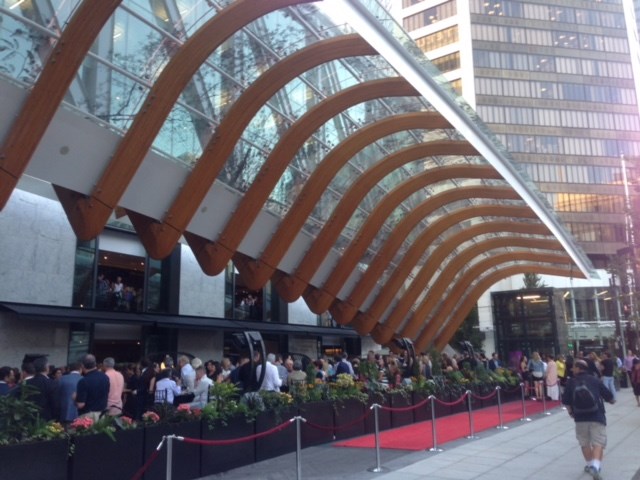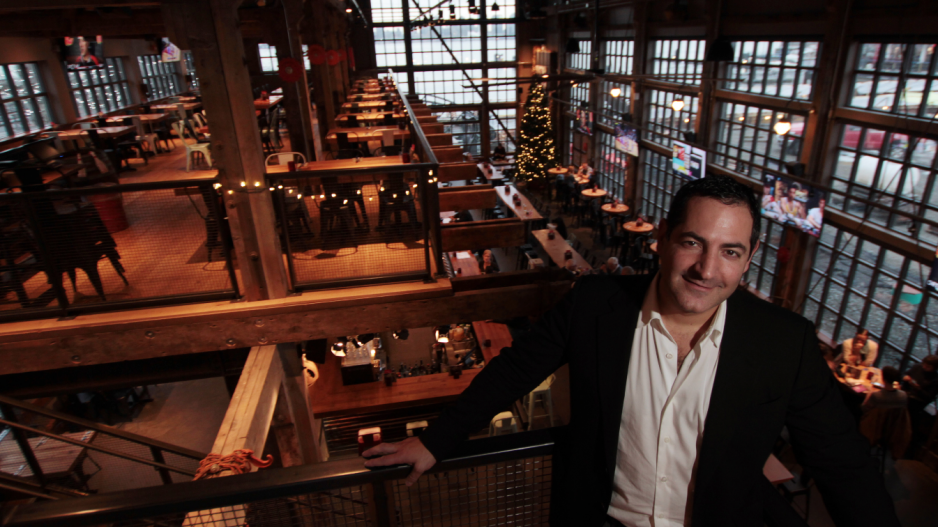High rents, increased labour costs and city requirements for washrooms have combined to fuel a trend toward entrepreneurs opening larger restaurants.
The risk of opening a 500-seat or 700-seat restaurant is that if owners can’t fill the seats consistently, they’ll go out of business quickly.
The reward, however, is that tremendous operating efficiencies can be enjoyed as a bistro’s seat count rises.
Glowbal Group owner Emad Yacoub compared the trend of larger restaurants in Vancouver to that of larger planes in the airline industry and larger ships in the cruise sector.
“A larger plane will be more expensive to buy, but just because you’re adding an extra 50 seats, it doesn’t mean that you’re going to need more pilots,” said Yacoub, who opened the 17,000-square-foot Glowbal restaurant at Telus Garden in August.
He suggested that an airline might have to add one more flight attendant to service the extra seats and pay marginally higher fuel costs, but the return from selling those extra 50 seats would more than offset those minor costs.
Yacoub can fit 499 diners in his new space, although he usually configures the restaurant to accommodate 429.
He said his lease rate is based largely on prime street-front square footage, so having a deep restaurant with a basement that he can use for food preparation and other non-revenue-generating tasks means that he can get extra space for virtually nothing.

(Emad Yacoub opened his newest Glowbal restaurant at Telus Garden in August | Glen Korstrom)
The City of Vancouver has complex regulations for how many washroom stalls are needed, but one take-away lesson is that more people per washroom stall are allowed in a 500-seat restaurant than in a 300-seat restaurant. Yacoub said that allows even more square footage to be proportionally freed up for revenue-generating functions such as dining.
Tap & Barrel owner Daniel Frankel agreed that it’s more efficient to operate large restaurants.
He opened what he said is Western Canada’s largest restaurant in North Vancouver’s Lower Lonsdale area in August.
“All of my friends in North Vancouver complain that they always have to come downtown, and they have nowhere to go in the North Shore,” Frankel said to explain why he opened his 740-seat restaurant in the rapidly densifying neighbourhood.
“It’s also at a perfect transportation hub [because] you’ve got six million annual users of the SeaBus who are one block away from us here. There’s a bus hub at Lonsdale Quay and free parking after 5 p.m. at ICBC as well as free parking at Lonsdale Quay.”
Frankel’s new Tap & Barrel is the third of three large restaurants in that chain. He opened a 550-seat Tap & Barrel in the Olympic Village in mid-2013 and a 480-seat Tap & Barrel near the Vancouver Convention Centre in mid-2012.
Yacoub and Frankel sometimes close their entire restaurants for private functions. Their preference, however, like that of the owners of other large restaurants, such as the 700-seat Pink Pearl in East Vancouver and the 400-seat Earls in Yaletown, is to close off rooms or portions of the restaurant.
“If large groups just take our upstairs, which is 150 seats, it makes it way easier for us because it doesn’t disrupt the downstairs,” said Frankel.
Yacoub added that, in the Christmas season, people expect large restaurants might be booked for private functions.
“That can’t happen too much,” he said. “If people come to the door every day and the restaurant is closed for a private function, they’re going to stop coming.” •




